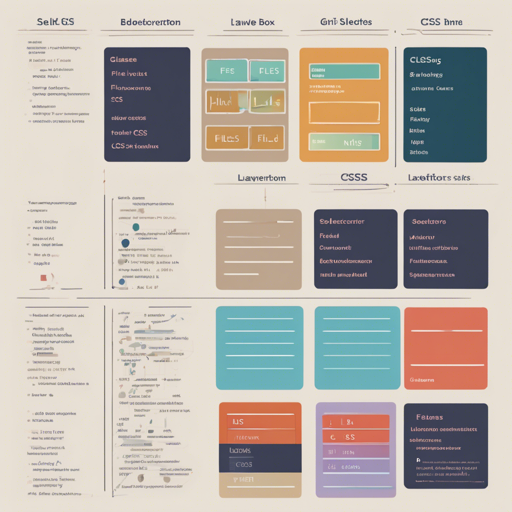CSS (Cascading Style Sheets) is an essential skill for any aspiring web developer. By understanding CSS selectors, box models, grid layouts, and flexbox, you can create visually engaging web pages. This article will guide you step-by-step through these concepts, making it simple yet effective for your development needs!
1. CSS Selectors
CSS selectors are patterns used to select the elements you want to style. Let’s break down the various types of selectors available and what they do:
- Child Combinator: Selects all elements that are directly inside elements.
- Descendant Combinator: Selects all elements that are anywhere inside elements.
- Adjacent Sibling Combinator: Selects all elements that are immediately next to elements.
- General Sibling Combinator: Selects all elements that are anywhere after elements.
- Class Selector: Selects all elements that have the specified class name.
- Tag + Class Selector: Selects all elements that have a specified class name.
- Multi-class Selector: Selects all elements that have both class names.
- Attribute Selector: Selects all a elements that have the specified attribute set to a value.
- ID Selector: Selects the element with the specified ID name.
- Universal Selector: Selects all elements in the document.
2. CSS Box Model Preview
The box model is a fundamental concept in CSS layout design. It describes how elements are structured and spaced on a webpage:
- box-sizing: border-box: The width and height include content + padding + border.
- box-sizing: content-box: The width and height include only the content.
3. CSS Grid Layout: Align Content
CSS Grid Layout is an effective way to structure content on a webpage. Here’s how you can align content:
- align-content: start
- align-content: space-around
- align-content: center
- align-content: space-between
- align-content: end
- align-content: stretch
4. CSS Flexbox Layout: Main Properties
Flexbox is another powerful layout model which allows you to control the placement and alignment of elements in a flexible and responsive way:
-
Flex Direction:
Sets how flex items are placed in the flex container. -
Align Content:
Sets the distribution of space between and around content items along the cross-axis. -
Justify Content:
Defines how the browser distributes space along the main axis.
Troubleshooting Tips
Even the best developers run into bumps along the road! Here are some troubleshooting tips:
- If your CSS selectors aren’t working, check for typos or misplaced brackets.
- If items aren’t aligning as expected with Grid or Flexbox, consider inspecting HTML structure and properties.
- Test your styles in different browsers to ensure compatibility.
For more insights, updates, or to collaborate on AI development projects, stay connected with fxis.ai.
At fxis.ai, we believe that such advancements are crucial for the future of AI, as they enable more comprehensive and effective solutions. Our team is continually exploring new methodologies to push the envelope in artificial intelligence, ensuring that our clients benefit from the latest technological innovations.

